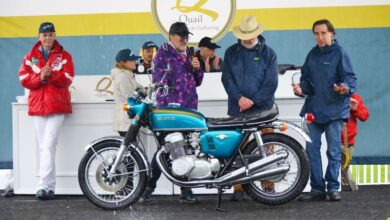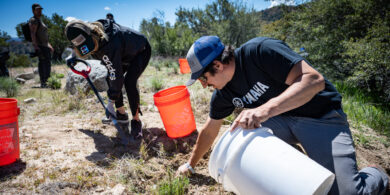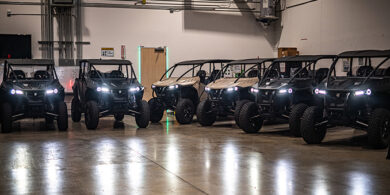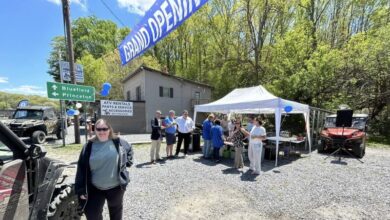March 13, 2006 – Big Dog continues growth pattern
CINCINNATI — The aircraft and auto industries, surprisingly enough, are playing a role in Big Dog Motorcycles’ escalating growth.
Big Dog, the second largest American manufacter of V-twin motorcycles, experienced another growth year of production in 2005, President Nick Messer said in an interview with Powersports Business at the recent V-Twin Expo.
Big Dog manufactured roughly 5,000 motorcycles in 2005, about 10 percent more than the prior year.
“In the earlier years, we were rampin’ up (production) by 30 percent per year,” Messer said of Wichita, Kan.-based Big Dog, which started production in 1994.“But obviously when you get to a certain point, you start slowing down.”
The final 2005 production tally was down slightly from what the company was hoping for, Messer said. Although there’s no concrete data to prove it, Messer believes the auto industry’s employee purchase programs over the summer negatively affected the motorcycle market, including Big Dog’s 2005 numbers.
The employee purchase program could have impacted consumer spending across several big-ticket markets. Messer said year-end sales were down in boats, RVs and motorcycles.
Despite that obstacle, Big Dog made roughly 500 more bikes in 2005 than the previous year and Messer expects similar annual growth in the next few years. One reason he can be optimistic is the early success of the company’s newest model, the K-9, a 9-foot-long chopper introduced in September.
“It’s doing extremely well,” Messer said of fall sales that have come mostly from the South.
Part of the early success can be attributed to the design of the K-9, which features a long wheel base and a 300mm rear tire.
“We’re very proud of the fact that we have over a dozen engineers,” Messer said.
Most of those engineers came from the aircraft industry. Big Dog’s headquarters site, Wichita, is a hub for aircraft makers, including Boeing, Cessna and Leerjet.
“We basically hire from that pool of engineers,” Messer said. “These guys have really helped us (improve) the reliability” and comfort of the motorcycle.
How can an aircraft engineer be effective on a totally different vehicle?
“We know a lot about engineering and probably a little less about bikes when we first started,” said Dustan Hahn, Big Dog’s chief technical officer who once worked in the aircraft industry. “Now we know a lot about the bikes and a lot about engineering.”
The switching of industries isn’t uncommon for engineers, said Hahn, who has developed everything from missile launchers to human implants to Big Dog motorcycles.
“The basic sciences and problem-solving skills are the same” in motorcycles and airplane engineering, Hahn said.
“The one thing we pay attention to most is ridability,” he said, noting Big Dog engineers pay particular attention to bike geometry, steering geometry and suspension. “All of those kind of things that make the bike ride well and we put style around it.
“A lot of people just design for style. I’d like to think we pay a little more attention to mechanical detail along with the styling.”
That can be as simple, and difficult, as ensuring when the rider puts the bike in idle, he hears the engine and not the rattling of the hand or foot-control levers.
Making the bike more rider-friendly is a big key for Big Dog, Messer said.
“A lot of people are somewhat intimidated by choppers,” he said. “They think they’re going to be somewhat difficult to manage or difficult to handle. But in actuality, they’re really not.”
Messer can attest to that, since he rode the new K-9 800 miles last fall in a trip from Wichita to Sturgis.
“There’s a lot of tricks you can do to these motorcycles that make it where it’s user-friendly,” he said.
The increasing popularity of Big Dogs bikes already has the company looking ahead.
Messer said the company has purchased more than 100 acres of land on the outskirts of Wichita and currently is working on designs and plans of a new facility.
That facility, however, isn’t needed yet.
“Right now, our production maximum level is about 25 bikes a day,” said Messer, noting that production numbers can fluctuate daily. Production “is all based on the supply and demand issue.
“We’ll survive fine in our current facility for the next two to three years.” psb




